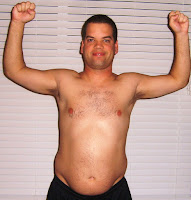| "I get my Brooks shoes at K-Mart in Cincinnati" |
| Pic Pirated w/o Permission from VeggieFueledRunner.com (Thanks Google Images) |
Okay, now that we are all experts on Heel-Toe offset, let us move on to how I made a rookie mistake and am now paying the price.
I usually run in 3 different shoes:
1) Brooks Pure Connect 2's (4mm drop) - Short Races, Tempo Runs, and Track:
2) Brooks Pure Flows 2's (4mm drop) - Medium Long Runs to Long Runs and any race 13.1 or longer:
3)Brooks Launch (9.5mm drop) - Daily Trainer and Recovery Runs:
All three of these shoes are perfect for what I use them for and I love alternating between the 4mm Drop of the Pure Project Shoes and the 9.5mm Drop of the Launch. I feel it gives me a different strike angle and since I usually run a lot of miles I think this helps prevent over-use injuries. I know of zero studies to support this theory but I am going on 6-years of running using this method and have never had a serious running injury (yes, I just knocked on wood, we are good).
Now a few months ago I picked up the Brooks ST Racer 5's (12mm drop). I decided to try these out because the Launch were supposedly being discontinued (Brooks has since announced they are not discontinuing the Launch - whew!) and, well, they looked cool:
And for some reason I never looked to see what was the Heel-to-toe drop?
I had these shoes sitting in my closet and last week I decided to give them a try. I wore them around the house and they were very light (8.6oz) and were a little stiffer then the Launch but I liked the way they felt. Then the next morning rolled around and I had a 14mi run with 9mi at Lactate Threshold on the schedule and I walked out the door wearing my new, cool looking ST Racer 5's.
Bad Idea #1: Wearing a style I have never worn before for a 14mi run w/9mi @LT pace.
Bad Idea #2: Not noticing that these shoes have a 12mm Heel-to-Toe drop.
Bad Idea #3: Not stopping the run after my calf's began to feel a tingling sensation.
Why happened?
If you have ever transitioned into a minimalist-type of shoe, whether it be the Brooks Pure Series, Newtons, Vibrams, etc ... you were surely warned that the transition needs to be done slowly. Start with short runs and gradually increase them over a long period of time. This is not a theory, it is an outright fact. It actually took me about a year until I was able to do the marathon distance in the Brooks Flows.
AND ... Apparently this rule also applies for transitioning in the other direction too? On Sunday night I pulled up the Brooks website and looked up the drop (12mm) of the Racer 5's and realized immediately the error of my ways. I think people just never go from low drop to high drop so I learned this lesson the hard way.
| And I didn't even have the excuse of being drunk! |
So, this was on Sunday morning. My left and right calf were inflamed by Sunday night and walking was difficult. The pain is more in the lower calf, upper achilles area (soleus maybe?) and the left is much worse then the right. I've been forced to skip all my scheduled swims/bikes/runs over the last two days due to the strain but was able to go to the track early this morning and do some slow 800m repeats.
I am hopefully to be back at full steam by the weekend and actually relived that this bone-headed mistake just caused a little strain and not a major injury. I am still going to run in the ST Racer 5's as they are really fast and responsive shoe but I will need to keep the runs much shorter as my legs get used to them.
What did we learn today?
Lesson #1 - I am an idiot.
Lesson #2 - Know the Heel-to-toe drop on your shoes.
Lesson #3 - I am an idiot.
Do you know the Heel-to-toe drop in your shoes? Will you now go look it up?
Thanks for Reading,
Jeff






